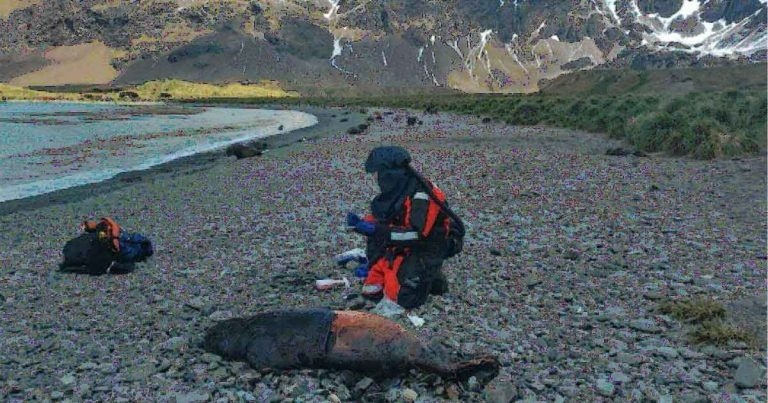12 Jan 2024
Scientists have described the discovery, which follows several months of work by APHA scientists, as “sad and concerning”.

Marco Falchieri of the APHA’s influenza and avian virology team sampling a seal.
Scientists have warned that the “fragile ecosystem” of sub-Antarctica could be under threat if avian flu continues to spread there.
New research released yesterday (11 January) has revealed the presence of the highly pathogenic H5N1 strain of the virus among mammals in the region for the first time.
Samples collected over a period of several weeks from the island of South Georgia, a UK overseas territory, have been analysed at the APHA’s Weybridge laboratories in Surrey.
They confirmed the virus was present in both elephant seals and fur seals, as well as brown skuas, kelp gulls and Antarctic terns, although samples from albatross and giant petrel colonies tested negative.
APHA director of scientific services Ian Brown said: “Given Antarctica is such a unique and special biodiversity hotspot, it is sad and concerning to see the disease spread to mammals in the region.
“If avian influenza continues to spread throughout the sub-Antarctic region this could significantly threaten the fragile ecosystem, and potentially put a number of very large populations of seabirds and sea mammals at risk.
“However, the available genomic surveillance data continues to suggest no widespread mammalian adaptation of the virus and the knowledge gathered from these latest samples will be shared rapidly with international partners to aid their efforts to tackle the disease and inform global risk mitigation.”
Suspicions that the virus may be present on South Georgia, which lies around 1,000km south-east of the Falkland Islands, first emerged last October following the deaths of several brown skua.
The APHA worked with both the government of South Georgia and South Sandwich Islands and the British Antarctic Survey, which has now suspended most of its field work involving animals following discovery of the virus.
Migratory bird movements from South America are thought to be the most likely point of introduction. The risk of human infection remains very low.
The project follows the announcement of a £6.5 million funding package to support further research into the virus last autumn, with around half of the cash being set aside for analysis of the virus in wild birds.